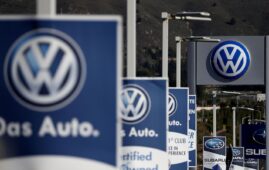



As you head to the gas pumps to fill up your tank, you might thinking, “You get what you pay for.” That is usually equated with a product that would best be described as “cheap.” If it falls apart after one use, you chalk it up to “getting what you paid for.”
Does that hold true with gas? Is the more expensive premium gas better for your car? It is time to break down the four things you didn’t know about premium gas.
1. Premium Gas Equals Better Mileage. True or False?
False. If you were to break down the chemical compound of premium gas — and why wouldn’t you? —you would find it has what is referred to as a “higher combustion threshold.” Unfortunately, that doesn’t automatically mean better gas mileage. You could put the pricier premium gas into your average car and there would be no discernible difference with regard to gas mileage. Why is that?
Because that wonderfully high combustible gas only impacts the mileage when you’re going at consistently high speeds. We’re talking racetrack speeds. Since you’ll never be riding at those speeds — — right? — you won’t see any improvement on your odometer that would justify the 30 cents more per gallon cost of premium gas.
2. Regular Gas Will Ruin a Premium Engine. True or False?
False. The panic many premium-gas car owners have relates directly to their warranty. If they don’t follow the “directions on the label” to the letter, they could blow out the engine and not get it fixed for free.
Not so fast. Premium gas is meant to optimize a car’s engine performance. Optimized covers a broad spectrum of performance. Regular gas won’t have an effect on that high-end engine.
Of course, when an engine knocks, it could be a sign you are using the wrong level of gas. But one fill-up with the “cheap stuff” isn’t going to mess with your engine.
3. Premium Gas Is Always the Highest Level of Octane. True or False?
False. Typically, there are three options to choose from at the pumps: low, mid and high octane. You’ll find those numbers consistent throughout your state because it has been regulated thusly.
What happens when you cross state lines? Things change. Your state’s high octane could be 90, but across the border, it pops up to 92. Does that mean you have to spring for the 92? Nope. If your car has been running smoothly on 90, keep it at 90 octane.


If you listened to my podcast.


First time home owners know that.


With tax season upon us, many.


Volkswagen AG (VOWG_p.DE) pleaded guilty on.
Hello to all